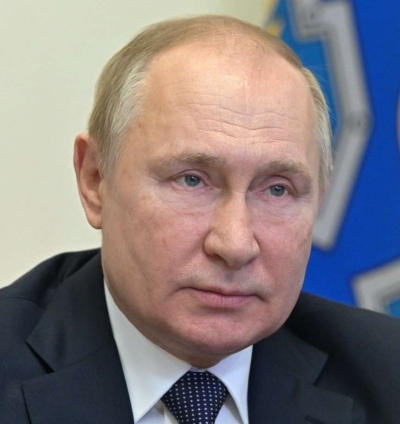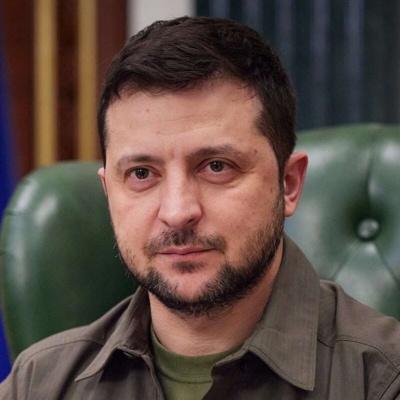On February 24, 2022, Russia launched a full-scale invasion of Ukraine.
This war sent shockwaves through the international community as the largest military conflict in Europe since World War II.
Why did Ukraine become a target of Russian aggression?
At the heart of the issue lie two decisive factors: Ukraine’s lack of nuclear weapons and its non-membership in NATO (the North Atlantic Treaty Organization).
These vulnerabilities exposed Ukraine’s national security weaknesses and ultimately triggered Russia’s invasion.
The Impact of Nuclear Disarmament

Image: President Zelenskyy – Public Domain
One of the primary reasons behind Russia’s invasion was Ukraine’s lack of nuclear weapons.
After the collapse of the Soviet Union in 1991, Ukraine inherited approximately 1,900 nuclear warheads, making it the third-largest nuclear power in the world.
However, under the 1994 Budapest Memorandum, Ukraine agreed to relinquish its nuclear arsenal to Russia and chose a path of denuclearization.
In exchange, Russia, the United States, and the United Kingdom pledged to guarantee Ukraine’s territorial integrity—a promise that ultimately proved hollow.
Nuclear weapons serve as an extremely powerful deterrent.
Examples such as North Korea and Pakistan show that possession of nuclear arms can effectively shield nations from direct military invasions by major powers.
Had Ukraine retained its nuclear weapons, Russia would have been forced to reconsider the cost of an invasion.
The threat of devastating retaliation would likely have deterred military aggression.
When Russia annexed Crimea in 2014, Ukraine lacked the means to counter militarily and had to rely on international sanctions.
This relatively successful operation likely emboldened Russia to pursue a full-scale invasion in 2022.
It is believed that President Putin viewed a non-nuclear Ukraine as a militarily manageable target and anticipated a swift victory.
The absence of nuclear weapons severely weakened Ukraine’s defensive capabilities and paved the way for Russia’s invasion.
The Consequences of Non-NATO Membership

Image: President Putin – Public Domain
Ukraine’s non-membership in NATO was another critical factor that enabled the invasion.
NATO is a military alliance that guarantees collective defense under Article 5, meaning that an attack against one member is considered an attack against all, and triggers a collective response.
This system has underpinned the security of its member states from the Cold War to the present.
Countries like Poland and the Baltic States have remained free from direct Russian military aggression largely because of NATO’s deterrent effect.
In 2008, Ukraine was promised the prospect of future NATO membership at the Bucharest Summit.
However, the formal accession process never moved forward.
Russia perceives NATO’s eastward expansion as a direct threat to its own security, and strongly opposed Ukraine’s potential membership.
After the annexation of Crimea in 2014, Ukraine pursued NATO membership more actively.
However, key members like Germany and France, wary of antagonizing Russia, adopted a cautious stance, and Ukraine’s membership bid stalled.
As a non-NATO country, Ukraine stood isolated without the shield of collective defense.
For Russia, invading a non-NATO nation posed far less risk of triggering a broader military conflict.
In response to the 2022 invasion, NATO provided Ukraine with weapons and economic sanctions but carefully avoided direct military intervention—precisely because Ukraine was not a NATO member, and Article 5 was not applicable.
Had Ukraine already been a NATO member, Russia would have faced the daunting prospect of a military confrontation with the entire alliance, making an invasion extremely unlikely.
Although Russia publicly cited Ukraine’s potential NATO membership as a security threat to justify its invasion, the reality is that Ukraine’s vulnerability outside of NATO protection was a key enabler.
Ukraine’s exclusion from NATO left it dangerously exposed to Russian military action, ultimately making the invasion a reality.
Conclusion
The absence of nuclear weapons and non-membership in NATO were the two critical factors that enabled Russia’s invasion of Ukraine.
These vulnerabilities exposed Ukraine’s fragile security posture and allowed Russia’s aggressive intentions to materialize.
The tragedy of Ukraine serves as a stark reminder: the lack of deterrence and protective alliances can leave a nation dangerously vulnerable.
The international community must reconsider the importance of nuclear deterrence and alliance-building in the face of evolving global threats.


